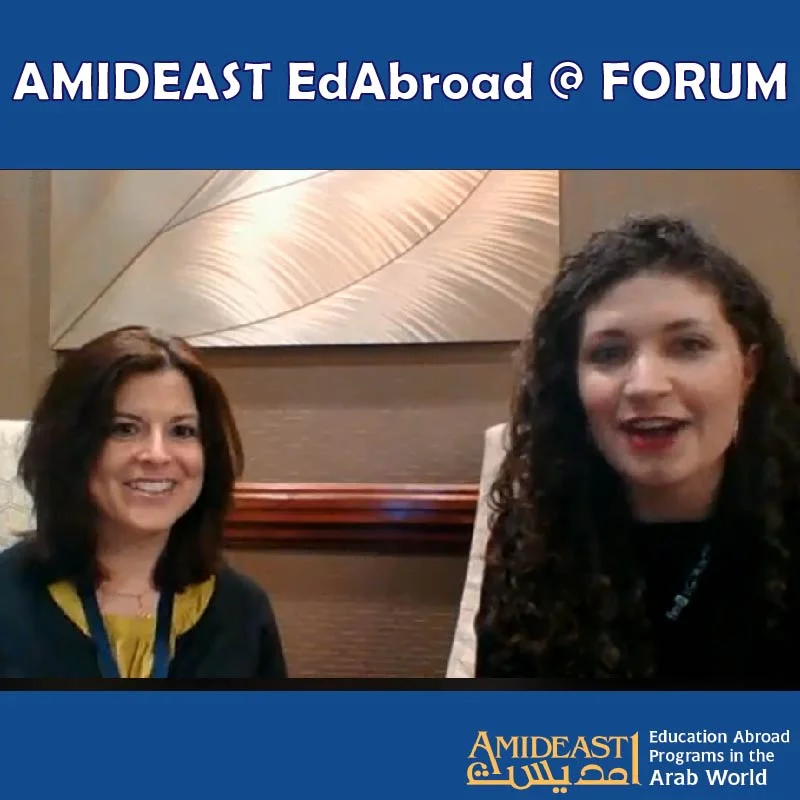"Spring Break Edition: Israel/Palestine" by Samantha Manno
As an active member of Students for Justice in Palestine (KSJP) at my school, I knew I had to visit Palestine before I left the region. During our spring break, I had the amazing opportunity to travel to Israel/Palestine for four days. My roommate and I stayed in West Jerusalem, the part of the city that has a Jewish majority population. We also had the opportunity to tour the West Bank. We went to the cities of Ramallah, Hebron, and Bethlehem.
Market in the Christian Quarter of the Old City. Photo Credit: Samantha Manno, 2018.
We scheduled a day trip to Ramallah and Hebron with Green Olive Tours and it was by far my favorite experience of the trip. We were picked up by a driver in Jerusalem, as our tour guide was not allowed to enter the city because he’s Palestinian and isn’t granted the kind of ID that lets him into it. Our bus stopped outside of Bethlehem, where our tour guide was waiting for us. We were greeted by a big red sign that stated in Hebrew, Arabic, and English: “This Road Leads To Palestinian Village The Entrance for Israeli Citizens is Dangerous.” I would find out later that this sign was present outside all roads that led to any city under PA control.
Our tour group travelled on a shared Palestinian-Israeli highway and Palestinian-only roads to travel between cities. On our way to Ramallah, we passed the Wall separating the West Bank from Israel. Many parts of the wall are covered with graffiti, a symbol of Palestinian resistance, but this part was bare. I was expecting to see the color and life of the resistance, but its stark grayness looked like it went on forever. Our tour guide also pointed out some of the illegal Israeli settlements that were scattered along the horizon and growing bigger everyday. While I know that Palestinians continue to bravely fight for their right to exist, I am reminded of the power of the Israeli government and its attempt to normalize Palestinians’ life under occupation.
In Hebron we passed through markets that resembled those of Jerusalem but were virtually empty, largely due to the lack of Palestinian mobility. It was a stark contrast to the hustle and bustle of Jerusalem markets. We were able to visit a glass factory, where I had the opportunity to blow glass for the first time, as well as a pottery studio where I got to paint a little tea cup (that I got to keep!). However, the most eye-opening aspect of Hebron was that it demonstrated how limited Palestinian mobility is. Hebron has over 100 checkpoints and Israeli soldiers were stationed everywhere. While our tour guide waited for us on a street approved for Palestinian use, we tourists, who were all holding American and European passports, were able to easily get through the checkpoints and go virtually anywhere we wanted. The ridiculousness of the situation become clearer to me in this moment; I, as an American, was not restricted in anyway, but our Palestinian tour guide was unable to walk on his own roads.
Showing off my art skills in Hebron. Photo Credit: Samantha Manno, 2018.
The next day, we took a trip with Abraham Tours to Bethlehem. This tour, while still a great experience, was less intriguing for me. Bethlehem is an important site in the Christian tradition, so the itinerary mostly consisted of seeing religious sites, such as the Church of the Nativity, where Jesus was born. The tour was pretty much void of political conversation. Our tour guide was Palestinian and had lived in Bethlehem for most of his life, and he focused on the religious significance of Bethlehem. When someone did ask a question relating to Israeli-Palestinian relations, he would answer the question quickly and then move on. In fact, I believe he mentioned the word “Palestine” only twice, and that was when he was asked a direct question about the conflict. I understand his hesitation. The tour group was composed of mostly Americans and Europeans, and it is difficult to know the positions they take on the conflict. It is safer to frame the tour around its religious significance than it is to describe life in Bethlehem under occupation. And while I was more interested in his experience as a Palestinian-Christian under occupation, I understand that he doesn’t owe that conversation to anyone.
I particularly enjoyed exploring the Old City. It almost makes you forget the hardships the Palestinians are facing on the other side of the concrete Wall, or within the walls of the Old City itself, or just outside them. And while I enjoyed my trip, I knew it was because I was born with privilege that extends to my positionality as a student of this part of the world and someone engaged in Palestine activism on campus. And that’s something I couldn’t and didn’t want to forget as I explored the beauty of the markets, the Church of the Holy Sepulchre, or the Western Wall. They are were all incredible, and I feel humbled by having visited them. But more importantly, I learned more about Palestine and the occupation.
Banksy graffiti art in Bethlehem. Photo Credit: Samantha Manno, 2018.






